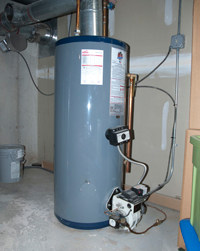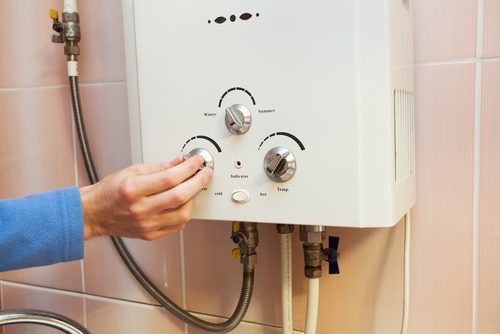The content which follows about Water Heater Maintenance Tips You Can't Afford to Forget is truly insightful. Have a go and draw your own personal final thoughts.

Warm water is essential for day-to-day convenience, whether it's for a rejuvenating shower or washing dishes. To guarantee your hot water system runs efficiently and lasts much longer, routine upkeep is crucial. This post offers sensible ideas and insights on how to maintain your home's warm water system to prevent disruptions and pricey repair services.
Intro
Maintaining your home's hot water system could appear challenging, yet with a couple of straightforward steps, you can ensure it runs efficiently for several years to find. This overview covers whatever from comprehending your warm water system to do it yourself upkeep pointers and recognizing when to contact expert assistance.
Value of Preserving Your Hot Water System
Regular maintenance not just expands the life-span of your hot water system however likewise ensures it runs successfully. Ignoring maintenance can lead to lowered effectiveness, higher power bills, and also premature failing of the system.
Indicators Your Warm Water System Needs Upkeep
Recognizing when your warm water system requires attention can avoid significant issues. Look out for indications such as irregular water temperature, odd sounds from the heater, or rusty water.
Comprehending Your Hot Water System
Prior to diving into upkeep tasks, it's valuable to understand the fundamental parts of your warm water system. Normally, this includes the water heater itself, pipelines, anode poles, and temperature level controls.
Regular Monthly Upkeep Tasks
Routine month-to-month checks can help catch small concerns prior to they intensify.
Purging the Water Heater
Purging your water heater removes sediment build-up, improving performance and prolonging its life.
Checking and Changing Anode Rods
Anode rods prevent corrosion inside the tank. Inspecting and replacing them when worn is essential.
Checking and Changing Temperature Setups
Adjusting the temperature setups makes certain optimal efficiency and safety.
DIY Tips for Upkeep
You can execute a number of upkeep tasks on your own to maintain your warm water system in leading problem.
Looking for Leakages
Frequently examine pipelines and links for leaks, as these can result in water damage and greater bills.
Testing Pressure Alleviation Valves
Testing the pressure safety valve ensures it operates appropriately and avoids too much stress build-up.
Shielding Pipes
Protecting hot water pipes reduces heat loss and can conserve energy.
When to Call an Expert
While DIY upkeep is advantageous, some issues call for professional proficiency.
Complex Issues Calling For Expert Aid
Instances include major leakages, electrical problems, or if your water heater is regularly underperforming.
Routine Specialist Maintenance Conveniences
Expert maintenance can consist of comprehensive evaluations, tune-ups, and ensuring conformity with safety criteria.
Final thought
Routine upkeep of your home's warm water system is necessary for performance, long life, and expense financial savings. By adhering to these ideas and recognizing when to look for expert aid, you can guarantee a dependable supply of hot water without unanticipated interruptions.
How to Maintain an Instant Hot Water Heater
Before tinkering with your hot water heater, make sure that it’s not powered on. You also have to turn off the main circuit breaker and shut off the main gas line to prevent accidents. Also turn off the water valves connected to your unit to prevent water from flowing into and out of the appliance. 2. When you’re done, you have to detach the purge valves’ caps. These look like the letter “T†and are situated on either side of the water valves. Doing so will release any pressure that has accumulated inside the valves while at the same time avoid hot water from shooting out and burning your skin. 3. When the purge valves’ caps are removed, you have to connect your hosing lines to the valves. Your unit should have come with three hoses but if it didn’t, you can purchase these things from any hardware or home repair shops. You can also get them from retail stores that sell water heating systems. Read the user’s manual and follow it to complete this task properly. When the hosing lines are connected, open the purge port’s valves. 4. You should never use harsh chemical cleaners or solutions when cleaning your unit. Make use of white vinegar instead. It should be undiluted and you’ll probably use about 2 gallons. 5. Now flush your water heater. This task should probably take about 40 minutes. We can’t give you specific directions for this because the procedure is carried out depending on the type, model and brand of your heater. With that being said, refer to the user’s manual. 6. When you’re done draining the unit, you have to turn off the purge port valves again. Remove the hosing lines that you earlier installed on each of the water valves. Put the valve caps (purge port) back in their respective places and be very careful so as not to damage the rubber discs that are found inside these caps. 7. Now that everything’s back in place, check your user’s manual again to find out how to reactivate your water heating system. 8. Once it is working, turn one of your hot water faucets on just to let air pass through the heater’s water supply pipes. Leave the tap on until water flows smoothly out of it. https://www.orrplumbing.com/blog/2014/september/how-to-maintain-an-instant-hot-water-heater/

As a reader about Tips For Maintaining Your Hot Water Heater, I assumed sharing that piece of content was a smart idea. Feel free to take the time to share this post if you enjoyed it. We value reading our article about What Kind of Maintenance Do Water Heaters Need?.
Click Here